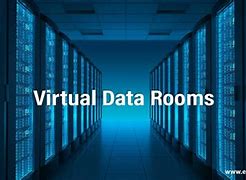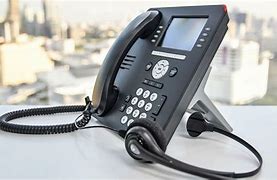
Daftar isi: [Hide]
- 1The Evolution of Virtual Data Rooms and What It Means for Your Business

In today’s digital landscape, businesses are constantly seeking ways to optimize their operations, streamline workflows, and enhance collaboration. Enter the virtual data room (VDR) – a revolutionary tool that has transformed the way companies handle sensitive information. But VDRs have come a long way since their inception. Let’s delve into the evolution of virtual data rooms and explore how these advanced platforms are shaping the future of business transactions and operations.
Initially, virtual data rooms emerged as secure repositories for storing and sharing sensitive documents, primarily during mergers & acquisitions (M&A) deals. These early VDRs provided a central hub where stakeholders could access essential information – from financial statements and contracts to legal documents – securely and efficiently. However, the traditional model faced limitations. Early VDRs often lacked intuitive user interfaces, advanced collaboration features, and robust security measures. They were, essentially, virtual file cabinets rather than dynamic platforms that empowered teams to collaborate and manage data seamlessly.
Over time, VDRs evolved into sophisticated platforms offering a multitude of features, reflecting the evolving needs of modern businesses. They became more user-friendly, boasting intuitive interfaces and collaborative functionalities that allowed users to work together on documents, track activities, and communicate effectively within the secure environment. Security also saw significant enhancements. With the advent of advanced encryption technologies, user authentication protocols, and data access controls, VDRs became formidable fortresses safeguarding sensitive information. This heightened security significantly mitigated risks and ensured data integrity, a crucial factor in fostering trust among parties involved in business transactions.
The Evolution of Virtual Data Rooms and What It Means for Your Business
The business landscape is constantly evolving, and technology is playing a key function in this transformation. Virtual data rooms (VDRs) are one such technology that has significantly impacted the way businesses operate, particularly in areas like mergers and acquisitions (M&A), fundraising, and regulatory compliance. But what exactly are VDRs, and how have they evolved to become the essential tool they are today?
What is a Virtual Data Room?
A virtual data room (VDR) is a secure online platform designed to share and manage sensitive documents and information. Imagine a secure, digital vault where you can store all your critical data, control who can access it, and track every interaction. This secure space allows for efficient collaboration, communication, and information sharing, regardless of location.
The benefits of Using a VDR
The benefits of using a VDR are numerous, including:
- Enhanced security: VDRs offer robust security measures, including encryption, access controls, and audit trails, ensuring the safety of your confidential information.
- Improved collaboration: VDRs facilitate seamless collaboration by providing a central hub for document sharing, communication, and feedback.
- boostd efficiency: VDRs streamline document management, saving time and resources by eliminating the need for physical storage and manual processes.
- Enhanced compliance: VDRs help businesses meet regulatory requirements by providing audit trails and secure document storage.
- Global accessibility: VDRs offer access to information from anywhere in the world, promoting seamless communication and collaboration across teams and geographies.
How VDRs Work
VDRs function by creating a secure online environment where documents can be uploaded, organized, and accessed by authorized individuals. They typically include attributes such as:
- Document upload and management: Easy and secure upload of documents in various formats.
- Access control: Granular control over who can access specific documents and folders.
- Audit trails: Detailed logs of all user activity, including document access and changes.
- Communication tools: Secure messaging and collaboration attributes for efficient communication.
- Advanced search and filtering: Efficiently find specific documents within the VDR.
- Watermarking: Protect intellectual property by adding watermarks to documents.
How VDRs Have Evolved Over Time
The evolution of VDRs mirrors the advancements in technology itself. They have transformed from simple file-sharing systems to sophisticated platforms offering a wide scope of attributes and functionalities.
The Early Days of VDRs
The first VDRs emerged in the late 1990s as a solution to the challenges of managing large volumes of documents during M&A transactions. These early VDRs were primarily hosted on-premises and had limited functionalities, often requiring users to download documents onto their local computers.
The first VDRs and their limitations:
- On-premises hosting: Required physical infrastructure and maintenance.
- Limited functionalities: Primarily focused on document storage and sharing.
- Lack of user-friendly interfaces: Difficult to navigate and use.
- High cost: Expensive to implement and maintain.
The challenges of early VDR technology:
- Security concerns: On-premises hosting made security a major concern.
- Limited accessibility: Users had to be physically present to access documents.
- Lack of collaboration attributes: Limited communication and feedback options.
- High setup and maintenance costs: Significant upfront investment and ongoing maintenance expenses.
How early VDRs were used:
- M&A transactions: Due diligence and information sharing during acquisitions.
- Real estate transactions: Sharing property information and documents.
- Legal discovery: Managing and sharing evidence in legal proceedings.
The Rise of the Modern VDR
The advent of cloud computing and advances in software development revolutionized VDR technology, leading to the emergence of modern VDRs.
How technology has transformed VDRs:
- Cloud-based hosting: boostd accessibility, scalability, and cost-efficacy.
- User-friendly interfaces: Intuitive design and ease of use for all users.
- Enhanced security: Advanced encryption and access control attributes.
- boostd functionalities: Collaboration tools, e-signatures, and advanced search capabilities.
The key attributes of modern VDRs: security, collaboration, and accessibility:
- Advanced security measures: Data encryption, multi-factor authentication, and audit trails.
- Seamless collaboration tools: Real-time document editing, commenting, and messaging.
- Global accessibility: Users can access the VDR from any location with an internet connection.
The impact of cloud computing on VDRs:
- Reduced costs: Lower setup and maintenance expenses compared to on-premises solutions.
- Scalability and flexibility: Easily adjust the VDR’s capacity based on user needs.
- Improved performance: Faster processing speeds and reduced latency.
How VDRs are Used Today
Modern VDRs are used across a wide scope of industries and applications. They are no longer limited to M&A transactions but have become essential tools for:
The most common uses of VDRs:
- Due diligence during M&A: Sharing financial records, contracts, and other sensitive information with potential buyers or sellers.
- Fundraising: Presenting business plans, financial statements, and other information to investors.
- Regulatory compliance: Storing and managing sensitive documents required for regulatory audits.
- Intellectual property management: Protecting patents, trademarks, and other intellectual property.
- Legal discovery: Sharing evidence and documents with opposing counsel in legal proceedings.
The benefits of using a VDR in these situations:
- Streamlined due diligence: Accelerate the M&A process by providing a centralized platform for sharing information.
- boostd investor confidence: Securely present information to potential investors.
- Simplified compliance: Meet regulatory requirements and reduce the risk of non-compliance.
- Enhanced IP protection: Safeguard valuable intellectual property from unauthorized access.
- Efficient legal discovery: Reduce legal costs and expedite the discovery process.
The Future of VDRs
The future of VDRs is promising, with emerging technologies poised to further enhance their capabilities and expand their applications.
The trends shaping the future of VDRs:
- Artificial intelligence (AI): AI-powered attributes for automated document indexing, search, and examination.
- The metaverse: Integration of virtual reality (VR) and augmented reality (AR) to create immersive VDR experiences.
- boostd security: Enhanced security measures to combat evolving cyber threats.
- Improved user experience: More intuitive interfaces and personalized user experiences.
- Integration with other business applications: Seamless connection with other tools, such as CRM and project management software.
The function of artificial intelligence (AI) in VDRs:
- Automated document examination: AI can help determine and extract key information from documents.
- Intelligent search: AI-powered search algorithms can quickly find pertinent documents.
- Predictive analytics: AI can analyze user behavior and predict future needs.
The impact of the metaverse on VDRs:
- Immersive VDR experiences: Users can interact with documents and other users in a virtual environment.
- Enhanced collaboration: Virtual meetings and presentations within the VDR.
- Improved security: Virtual environments can offer an additional layer of security.
The importance of choosing the right VDR for your needs:
- Consider your specific business requirements: Security, collaboration, and functionalities.
- study and compare varied VDR offerrs: Evaluate attributes, pricing, and customer support.
- select a VDR that is scalable and adaptable: Ensure it can meet your evolving needs.
The Impact of VDRs on Your Business
VDRs have a significant impact on businesses, improving efficiency, enhancing security, and streamlining collaboration.
How VDRs can improve efficiency and productivity:
- Automated processes: Reduce manual tasks, complimentarying up time for other activities.
- Centralized information: Streamline document management and reduce search time.
- Improved communication: Facilitate seamless communication and collaboration.
How VDRs can enhance security and compliance:
- Robust security measures: Protect sensitive information from unauthorized access.
- Audit trails: Track user activity and ensure compliance with regulations.
- Data encryption: Secure data transmission and storage.
How VDRs can streamline collaboration and communication:
- Real-time document sharing: Simultaneous access and collaboration on documents.
- Secure messaging: Facilitate secure communication between users.
- Feedback and approvals: Streamline the approval process for documents.
How VDRs can help you achieve your business objectives:
- Accelerate M&A transactions: Efficiently share information and complete due diligence.
- Securely raise capital: Present your business to investors with confidence.
- Meet regulatory requirements: Simplify compliance and reduce the risk of penalties.
- Protect intellectual property: Safeguard valuable assets from unauthorized access.
- Improve legal processes: Streamline legal discovery and reduce costs.
Conclusion: The Importance of Staying Ahead of the Curve
In today’s rapidly evolving business environment, staying up-to-date with VDR technology is crucial. The right VDR can significantly improve your business operations, enhance security, and streamline collaboration, ultimately helping you achieve your objectives.
Why staying up-to-date with VDR technology is crucial:
- boostd competition: Businesses are increasingly using VDRs, making it essential to stay ahead of the curve.
- Evolving technology: New attributes and functionalities are constantly being developed.
- Enhanced security: Staying up-to-date ensures you have the latest security measures.
- Improved user experience: New VDR platforms offer more intuitive interfaces and attributes.
How to select a VDR that meets your needs:
- Define your requirements: determine your specific needs in terms of security, attributes, and scalability.
- study and compare offerrs: Evaluate varied VDR platforms based on your requirements.
- Consider customer support: select a offerr with reliable support and responsive customer service.
- Get a complimentary trial: Try out varied VDRs before making a decision.
The future of VDRs and their impact on your business:
The future of VDRs is bright, with exciting new developments on the horizon. AI, the metaverse, and other emerging technologies will continue to transform VDRs, making them even more powerful and versatile. By embracing these advancements, businesses can leverage the power of VDRs to stay ahead of the competition and achieve their objectives in the digital age.







